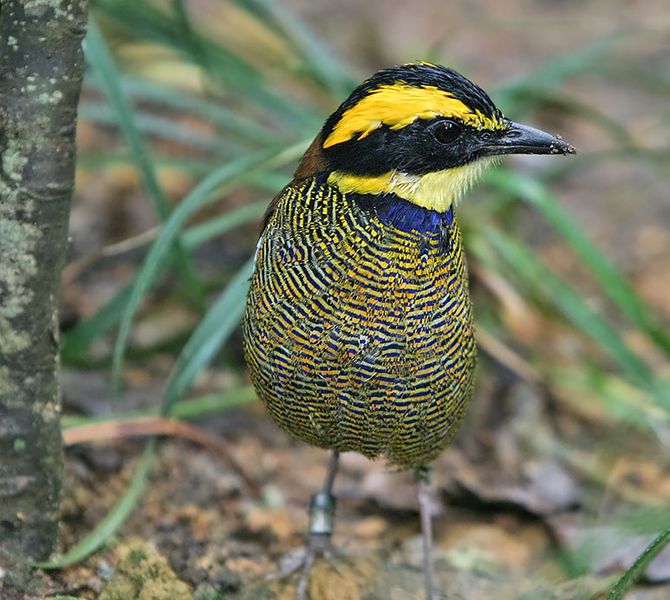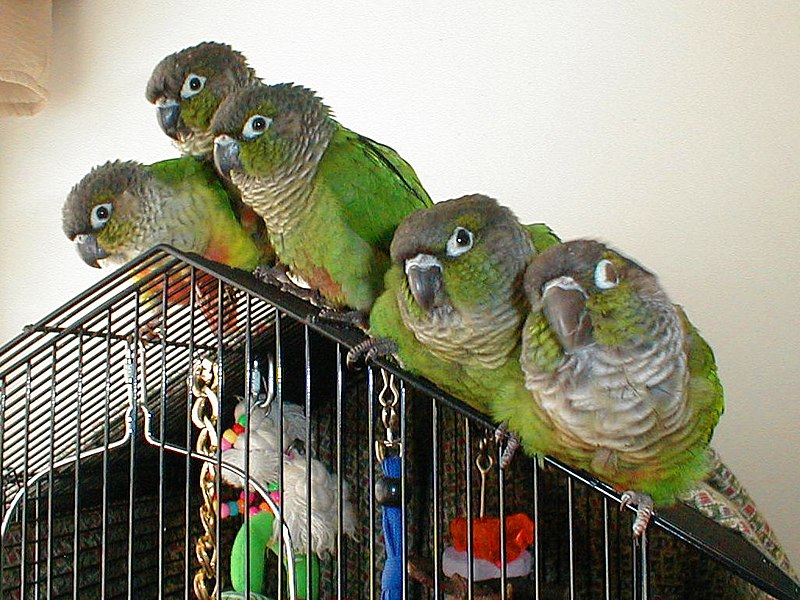 Gapeworms are parasitic nematodes (Syngamus trachea) that colonize the tracheal walls (please see photo) of a wide variety of wild, domestic and pet birds. These pests present somewhat of a dilemma, as they are associated with birds kept outdoors and/or those feeding on wild-caught invertebrates – two otherwise healthful aspects of bird-keeping! Read More »
Gapeworms are parasitic nematodes (Syngamus trachea) that colonize the tracheal walls (please see photo) of a wide variety of wild, domestic and pet birds. These pests present somewhat of a dilemma, as they are associated with birds kept outdoors and/or those feeding on wild-caught invertebrates – two otherwise healthful aspects of bird-keeping! Read More »
Birding Trips – Combining Bird-Watching and “Regular” Vacation Activities

Birding Plus…
The Sierra Club, the USA’s oldest grassroots conservation organization, sponsors a number of Volunteer Vacations – trips that include birding and conservation-oriented activities while leaving time for other pursuits as well. Read More »
The Banded Pitta – a Gorgeous Tropical Aviary Bird – Part 1
 The word “Exquisite” popped into my head when I caught my first glimpse of a Banded or Van den Bock’s Pitta (Pitta guajana) hopping through the underbrush in a Bronx Zoo exhibit. Years later, I had the good fortune to work with this beautiful ground-dweller, and my enthusiasm for them soared. Although still uncommon in captivity, the Banded Pitta is a species worth aspiring to – definitely a bird to keep as a “goal” while honing your skills and expanding your collection.
The word “Exquisite” popped into my head when I caught my first glimpse of a Banded or Van den Bock’s Pitta (Pitta guajana) hopping through the underbrush in a Bronx Zoo exhibit. Years later, I had the good fortune to work with this beautiful ground-dweller, and my enthusiasm for them soared. Although still uncommon in captivity, the Banded Pitta is a species worth aspiring to – definitely a bird to keep as a “goal” while honing your skills and expanding your collection.
Description
Words fail when one tries to describe the Banded Pitta – light and dark blues, orange, red, yellow, black, brown, white and gray all make their appearance in the male’s plumage. Hens, though more somberly clad, are no less attractive. Read More »
Parrot Health Concerns – Pacheco’s Disease
 Although it often takes a “back seat” to better-known avian diseases, Pacheco’s Disease (PD) is a serious concern that should be borne in mind by responsible parrot owners.
Although it often takes a “back seat” to better-known avian diseases, Pacheco’s Disease (PD) is a serious concern that should be borne in mind by responsible parrot owners.
General Information
First identified in the 1930’s, Pacheco’s Disease is highly contagious and nearly always fatal unless treated early on. Unfortunately, it advances rapidly, and afflicted birds often show no symptoms until it is too late. Shortly before death, birds stricken with PD may produce bright yellow urates and will pass very little fecal material; victims often expire in good weight. Read More »
Introducing a Lorikeet Rule-Breaker – the Black Lory
 Lories are among the most spectacularly-colored of all Psittacines, with the popular pet-trade species exhibiting an array of “screaming” red, blue, green and violet feathers (please see photo of the aptly-named Rainbow Lorikeet). But there are somberly-colored members as well, typified by the Black Lory, Chalcopsitta atra (sometimes also known as the Rajah or Red-Quilled Lory). But when it comes to lories, “somber” does not in any way equate with “dull”. The jet-black plumage of this beauty is highlighted by a purple sheen and dark orange-red eyes, leaving one with an impression that is not soon forgotten.
Lories are among the most spectacularly-colored of all Psittacines, with the popular pet-trade species exhibiting an array of “screaming” red, blue, green and violet feathers (please see photo of the aptly-named Rainbow Lorikeet). But there are somberly-colored members as well, typified by the Black Lory, Chalcopsitta atra (sometimes also known as the Rajah or Red-Quilled Lory). But when it comes to lories, “somber” does not in any way equate with “dull”. The jet-black plumage of this beauty is highlighted by a purple sheen and dark orange-red eyes, leaving one with an impression that is not soon forgotten.
Range and Habitat
The Black Lory ranges over Western New Guinea (the Western portion of Papua New Guinea’s Vogelkop Peninsula and Western Irian Jaya) and the nearby islands of Batanta and Salawati. Four subspecies have been described.
The little field research that has been carried out indicates that Black Lories favor forest edges and sparsely-wooded grasslands. Isolated tree stands in largely cleared areas are frequented, but they seem rarely if ever to penetrate very far into thickly-wooded habitats. Large flocks, sometimes comprised of several species of lories and other birds, have been recorded.
Considerations for Prospective Owners
Black Lories exhibit many of their tribe’s desirable traits – constant activity, a curious demeanor and a willingness to bond with people if treated kindly – as well as those considered “not-so-desirable” – a loud, high pitched call that they employ most enthusiastically and an often aggressive attitude towards other birds.
In common with related species, Black Lories are quite sensitive to cold, damp conditions. Their size (to 12.5 inches) and high energy levels suit them well for outdoor aviary maintenance, but in temperate regions they must be brought inside during the cooler months. Indoor winter temperatures of 72-75 F are sufficient.
Diet
While Black Lories have been kept on a diet comprised largely of high quality commercial lory food, when caring for these birds at an importing facility years ago I favored a more complex diet.
Following the advice of several older bird-keepers of my acquaintance, I used commercial lory nectar but also provided twice-daily feedings of a fruit/vegetable pulp (pears, various berries, apples, pineapple, carrots, cucumber, honey). To this was added egg food, rice flour and high-protein baby cereal, along with a variety of seeds, kale, sprouts and other greens, and fruit tree branches (with blossoms in season).
Breeding
Although some breeding success has been had in large indoor cages, it is preferable to establish a mated pair outdoors in a quiet location.
Black Lories favor large nest boxes – one measuring approximately 16” x 16” x 22” will do nicely. A typical clutch consists of 2 eggs, which are incubated for 22-24 days. The young fledge in approximately 2 months. Perhaps due to their high metabolisms, Black Lory parents require extra-large quantities of high quality foods.
Further Reading
You can read about the conservation status and IUCN evaluation of the Black Lory here.
Amusing video of a Black Lory bathing.
Black Lorikeets image referenced from wikipedia and originally posted by elvranharris and snowmanradio
 That Bird Blog – Bird Care and History for Pet Birds
That Bird Blog – Bird Care and History for Pet Birds
